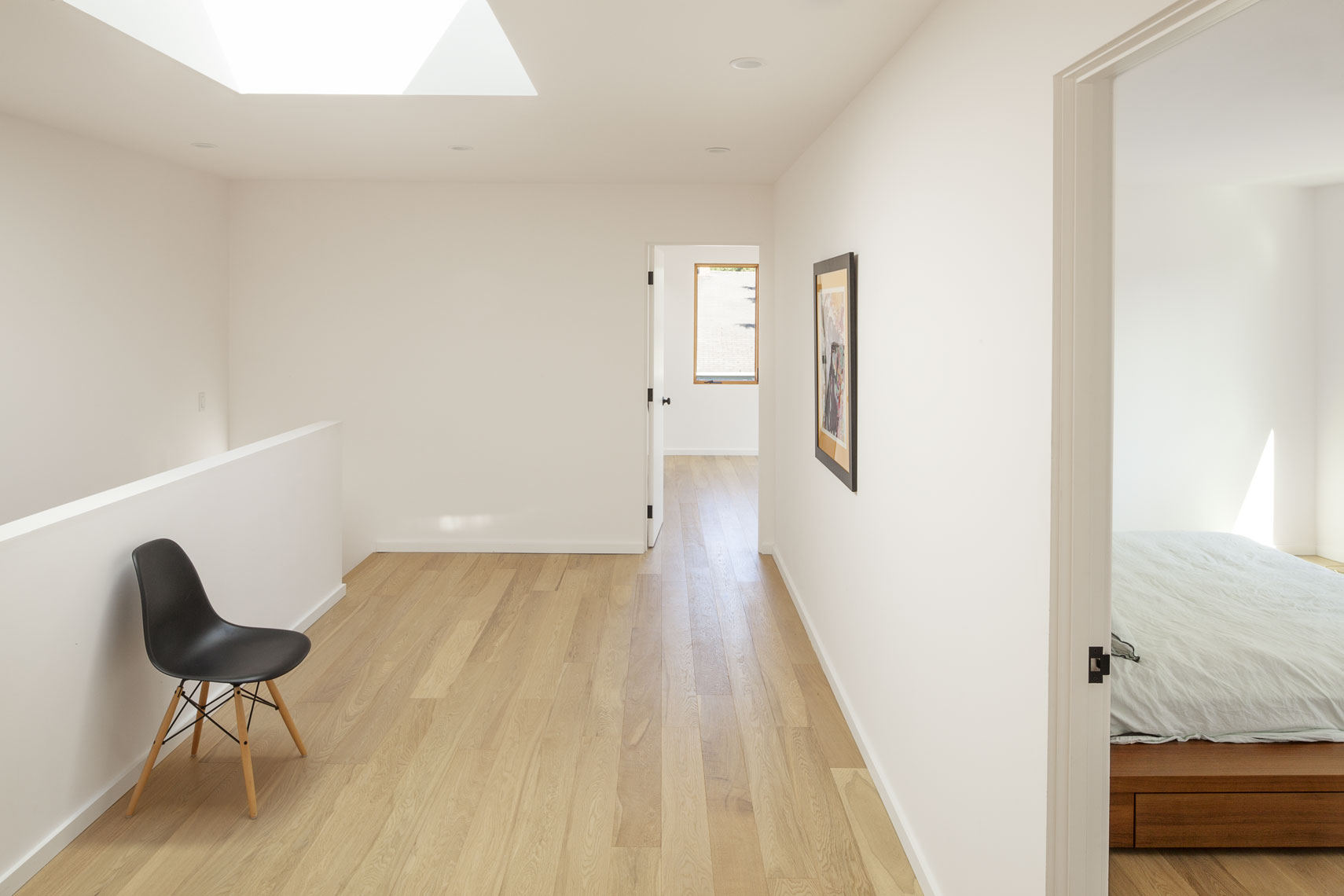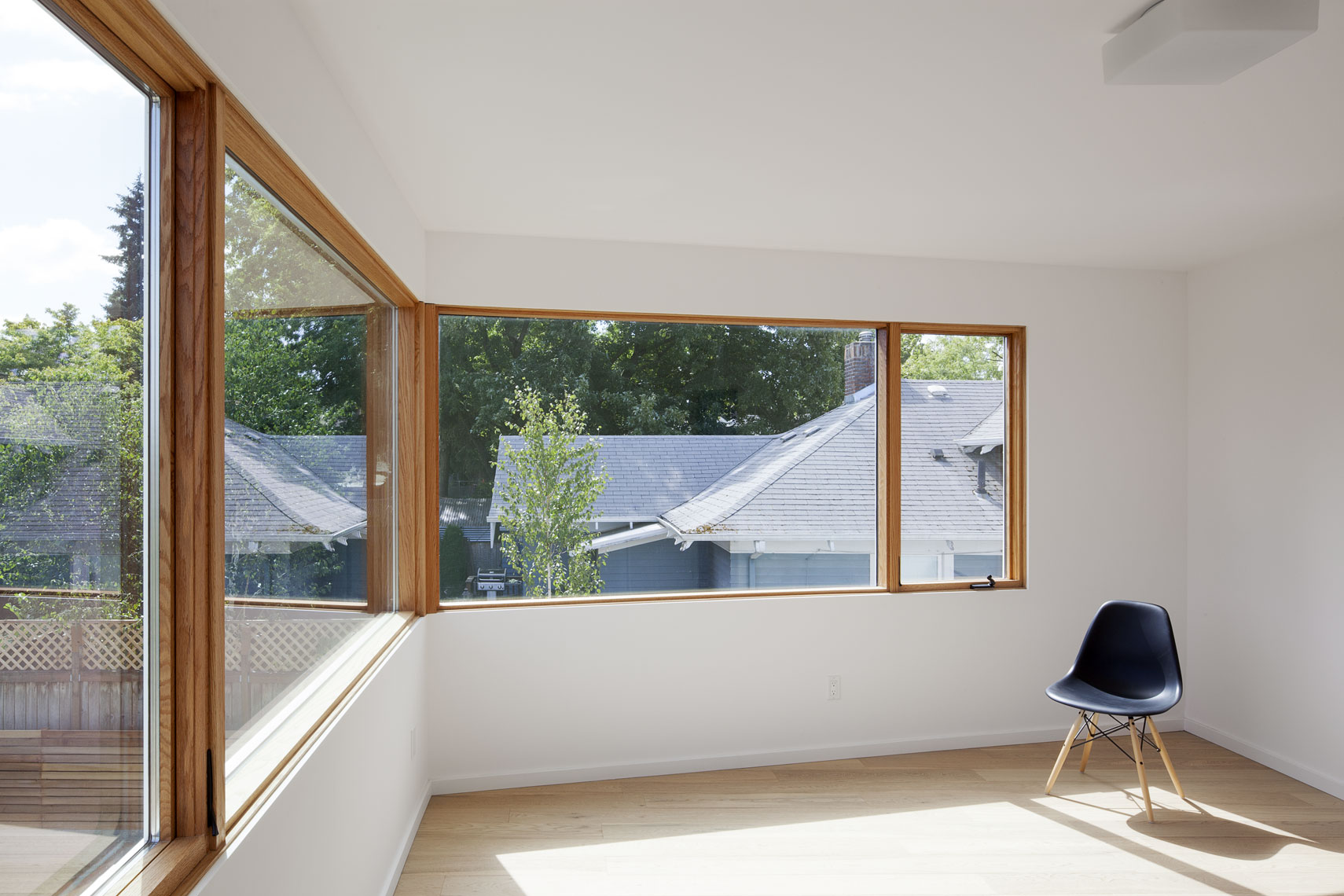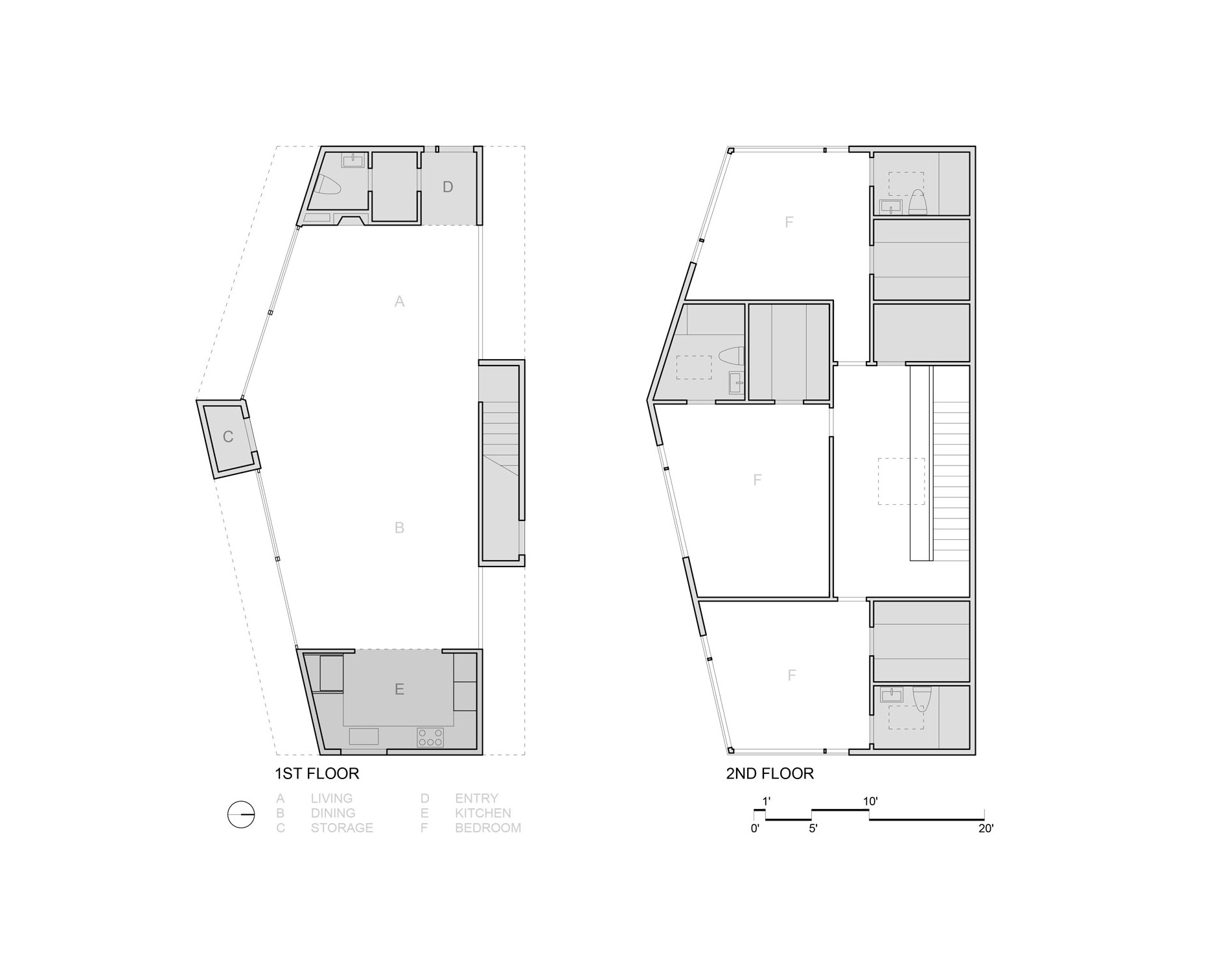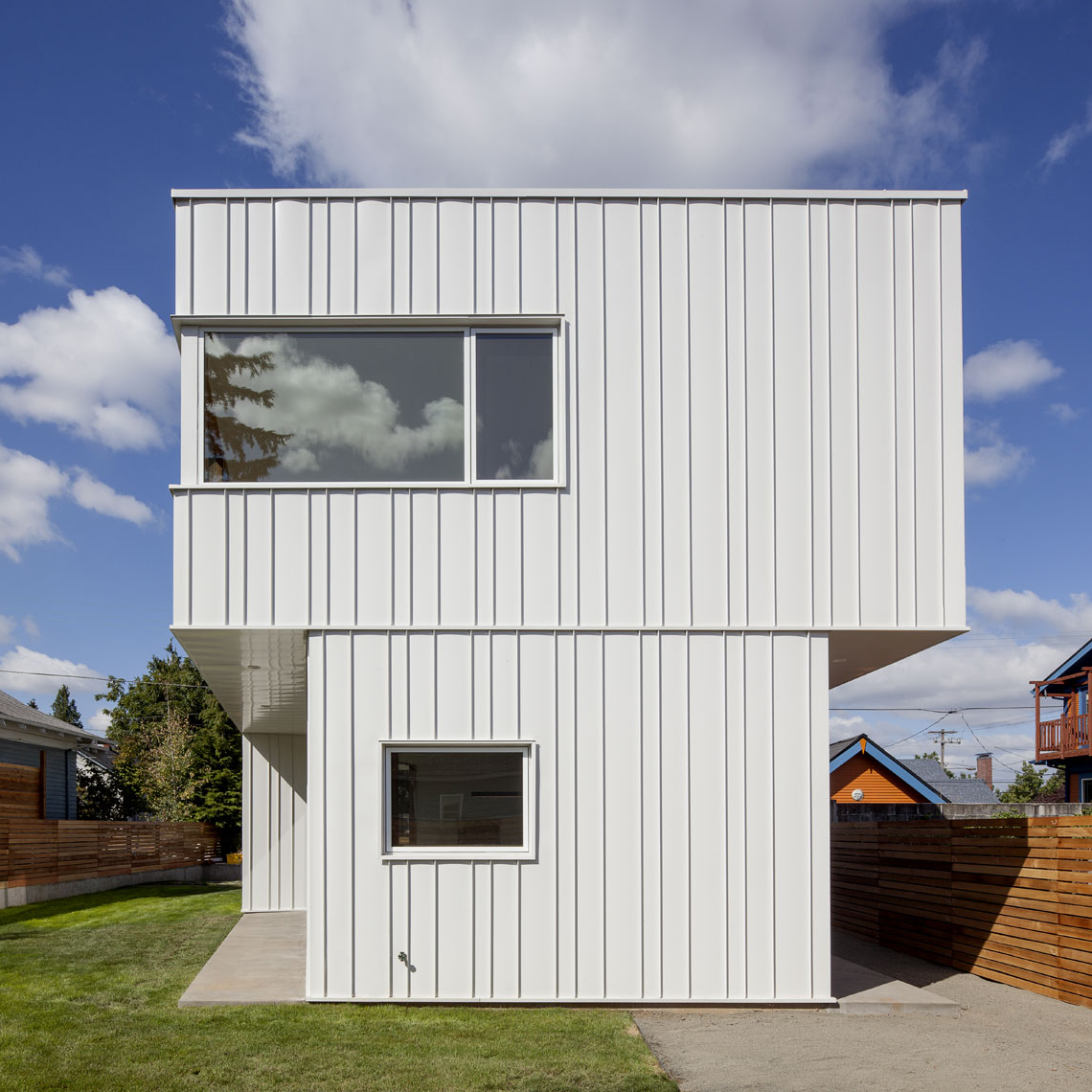
Pavilion House
Location:
Portland, Oregon
Type:
Houses
Size:
2,400 sf
Photographer:
Jeremy Bittermann
Status:
Completed 2014
Awards:
︎︎︎ 2016 AIA Portland Merit Award
︎︎︎ 2015 AIA NW and Pacific Region Citation Award
Press:
︎︎︎ 2015 October, Portland Architecture
︎︎︎ 2015 April, Dezeen, Pavilion House
︎︎︎ 2015 March, Portland Monthly
Our clients wanted a glass house. The difficulty was that they wanted this house placed on a visually exposed 50’ x 100’ city lot that they owned in NE Portland. This posed the challenge of designing a glass house with privacy. Our solution was to design a pavilion-like structure in which the body of the house is supported by four ten-foot-tall “legs.” The legs are placed strategically to block unwanted views and provide privacy. These four rectangular legs (housing stairs, kitchen, bathroom, and storage) support the second story. Between these legs, the open floor plan expands to outdoor living through floor-to-ceiling glass and doors.
The polished concrete floor is cast on grade, creating a seamless transition to the surrounding yard. Stepping into the north leg the mood changes as the stairway leads up to the bedroom level. Upstairs the spaces and rooms are more cellular and intimate. This part of the house is designed for flexible living arrangements (family or house sharing) with three compact, self-contained bedroom suites that wrap around a central landing and common study space. The exterior is clad in standing seam white metal panels of varying widths. The panels wrap the pavilion legs giving the impression that the house has been reductively sculpted from a single mass.
The polished concrete floor is cast on grade, creating a seamless transition to the surrounding yard. Stepping into the north leg the mood changes as the stairway leads up to the bedroom level. Upstairs the spaces and rooms are more cellular and intimate. This part of the house is designed for flexible living arrangements (family or house sharing) with three compact, self-contained bedroom suites that wrap around a central landing and common study space. The exterior is clad in standing seam white metal panels of varying widths. The panels wrap the pavilion legs giving the impression that the house has been reductively sculpted from a single mass.

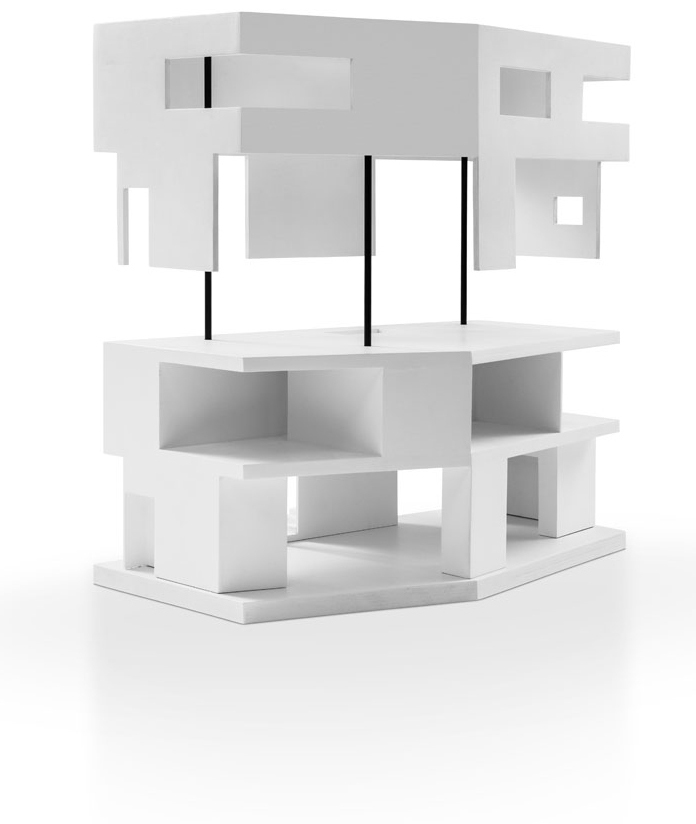
a pavilion-like structure in which the body of the house is supported by four ten-foot-tall “legs.” The legs are placed strategically to block unwanted views and provide privacy.
